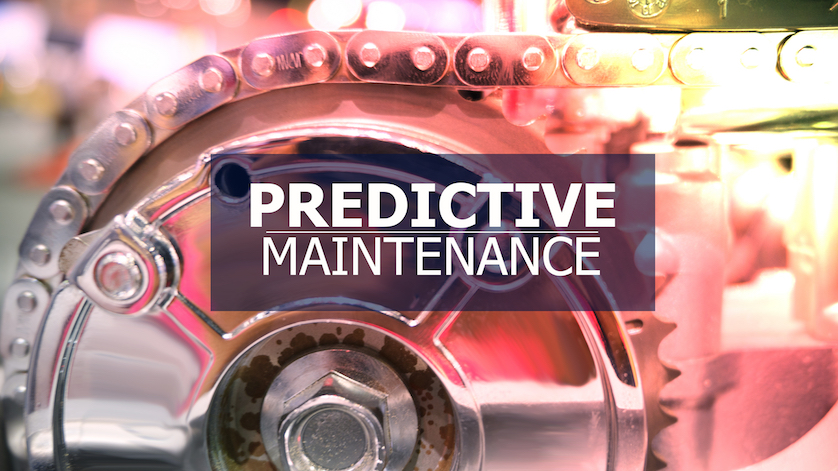
Predictive maintenance, a system where inputs from electronic sensors and transmitters are used to help forecast when equipment needs to be serviced or replaced, is the key to minimizing downtime, maximizing efficiency, and saving money.
Whether production lines are manual, automated, or a hybrid of the two, the goal of every manufacturer is to keep things running without a hitch. The same with off-road machinery like forklifts and agricultural sprayers. Equipment malfunction and failures mean accidents and unscheduled downtime, both of which can be costly and devastating.
The solution: predictive maintenance. In industrial and process applications, pressure sensors and transmitters serve as the backbone of a monitoring system that warns users when equipment needs to be serviced or replaced. In today’s smart factories and mobile working machines, these electronic components can be easily incorporated into existing processes. The predictive maintenance market was worth $2.39 billion in 2018 and is expected to reach $18.55 billion by 2026.
What Is Predictive Maintenance?
Predictive maintenance means using electronic pressure sensors and transmitters to monitor the smooth running of a production line and, more critically, to connect those sensors to software that can create models that accurately predict when equipment will degrade or performance will fall off.
Compare predictive maintenance to other forms. Corrective maintenance means fixing equipment when it breaks, while scheduled maintenance services or replaces parts on a set timeline. Take automobiles as an example. Which is most efficient?
- Changing the oil every 5,000 miles or six month.
- Changing it when the engine seizes from too much metal-on-metal friction.
- Changing it when the oil is about to pass its peak performance level.
Scheduled maintenance (A) is fine, but it doesn’t take into account other factors such as driving habits, type of oil, the vehicle’s age, climate, and so on. There’s also the possibility of changing the oil when it’s still serviceable, which not only takes time and money, but also wastes resources and unnecessarily adds to the waste stream.
When it comes to most machinery, including cars, corrective maintenance (B) is very expensive and dangerous. Only a fool would spend thousands of dollars on replacing an engine – and risk personal injury – rather than spending $25 to $50 for routine oil changes.
Predictive maintenance (C) is the smart, just-in-time approach: changing the oil only when electronic sensors indicate it needs to be changed.
Predictive Maintenance Calls for Electronic Pressure Sensors and Transmitters
In many industrial processes and mobile machinery, safe and efficient operations depend on maintaining the right pressure in equipment, such as the fluid moving through a pipeline or hydraulic hose. A drop in pressure might indicate a partial blockage or other internal issues, while a spike in pressure could mean that a breakage, eruption, or even explosion is about to occur.
Electronic pressure sensors let users “see” inside equipment and take preventive actions, before problems become too big to easily correct. In a process involving many parts and steps, multiple electronic transmitters will measure and set norms for a host of pressure variables, and also give a warning if anything is amiss.
Electronic pressure instruments remove the guesswork from taking readings and can also send the information to a nearby computer or remote monitoring station. What’s more, a network of sensors and transmitters allows operators to compile accurate trend data, allowing them to plan ahead for repairs and part orders.
Electronic Pressure Instruments by WIKA
WIKA USA offers a wide variety of electronic pressure sensors and transmitters for general purposes or specialized applications, including medical gases, refrigeration and HVAC, off-road machinery, liquid gas tanks, and sanitary applications. Here is a sampling of our most popular models:

S-20 pressure transmitter
A-10 pressure transmitter – for general industrial applications, with pressure ranges from 0…1 psi to 0…15,000 psi and an accuracy of up to ≤ ±0.3% of span- S-20 superior pressure transmitter – for general industrial applications, with pressure ranges from 0…10 psi to 0…20,000 psi and an accuracy of up to ≤ ±0.125% of span
- MH-4 OEM pressure sensor – developed especially for the extreme operating conditions of off-road vehicles
- A-1200 pressure sensor – with IO-Link for Industry 4.0-ready connectivity and diagnostics; multicolor 360° status display for easy troubleshooting
- IS-3 pressure transmitter – with SIL 2 rating and approvals from ATEX, IECEx, FM, and CSA for applications in hazardous areas
These and other WIKA pressure sensors are constructed almost entirely from solid-state electronics with few or no moving parts, thus offering a long, maintenance-free service life. They’re also highly customizable, with a wide selection of pressure ranges, pressure types, accuracies, materials, process connections, electrical connections, output signals, and much more. Our engineers can also customize sensors for your specific application. Each instrument is tested and calibrated prior to shipping.
WIKA Sensors for Better Predictive Maintenance
A complete predictive maintenance system combines high-performance pressure sensors with advanced computing technology to keep in-plant or off-road machinery working at their peak. To find out more about which electronic instruments you need, contact the pressure specialists at WIKA USA.
Products mentioned in this article:
• A-10 pressure transmitter
• S-20 superior pressure transmitter
• MH-4 OEM pressure sensor
• A-1200 pressure sensor with IO-Link
• IS-3 pressure transmitter for hazardous areas

